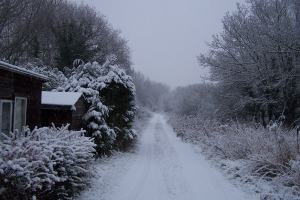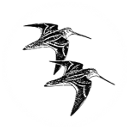Observations

January – February 2017
The cold period in early January led to many birds leaving the site and they have been slow to return, especially to the south lagoons where possibly the flock of swans in the autumn have depleted the food supply. Numbers did recover a bit in February, with 101 Shoveler suggesting a strong early spring passage. A flock of eight Egyptian Geese and a single White-fronted Goose, our first since 1996, were seen in January. A pair of Goosanders landed in the south lagoons in January.
The Bittern seen on the February count also made a minimum of four appearances in each month. There have possibly been two birds present throughout but the situation is confused by birds moving around the valley. A bird was seen to fly strongly south over the site from the north to beyond the power station but two birds were seen by the RSPB just two days later. The bird ringed last year also reappeared following a stay at Amwell. However many birds are involved, it does seem that numbers in the larger area have been encouragingly high this winter.
Eight Jack Snipe were found in the meadows, and there was a Golden Plover flyover. Single Woodcock were flushed on two dates and three were discovered on another date. A passage of gulls was noted in late January: 200 Common Gulls, 40 Herring Gulls, 15 Lesser Black-backs and a Mediterranean Gull flew over. Sundays, when the landfill sites are closed, always seem to be good for gull movements! In addition, a second winter Yellow-legged Gull visited No. 1 lagoon.
Up to nine Buzzards were seen, with one or two Red Kites and Peregrines on several dates. A single Raven was seen in January, and a pair flying over whilst the nine Buzzards were displaying in February combined to provide a sight more reminiscent of a Welsh valley rather than the Lee valley.
A Lesser Spotted Woodpecker seen in February and possibly heard the following week. Up to six Goldcrests were present on site, but pride of place amongst the passerines went to the three Bearded Tits which finally succumbed to a mist-net, one of which was a control.
Chiffchaffs have been continually present, the maximum recorded being 19 in January. They seemed to become scarcer during the cold snap and some may have moved away, but up to eight were still present in February. There appeared to be at least two tristis type birds, one with a ring and one without, in addition to these. A good number of Fieldfares have been coming to roost in the North Lagoons, with 169 birds at peak. A female Stonechat was seen in the meadow on one day in February. A Water Pipit has been consistently present on either the scrape or No 1 lagoon throughout. Once again finch numbers have been low with no Redpolls or Siskins recorded and only two single sightings of Linnet. However a count of 27 Yellowhammers going to roost in February shows an encouraging trend in numbers.
